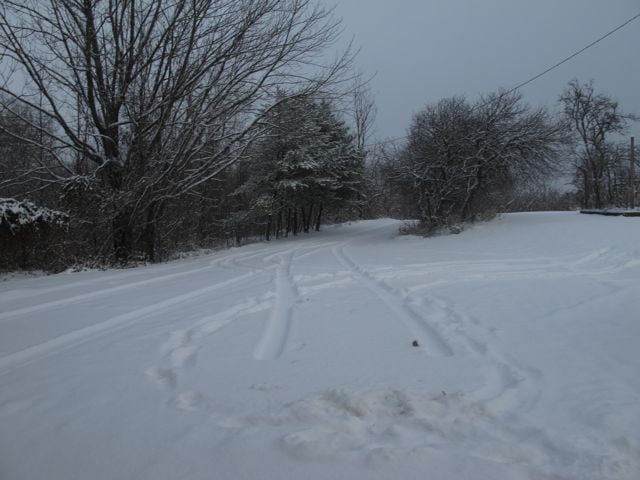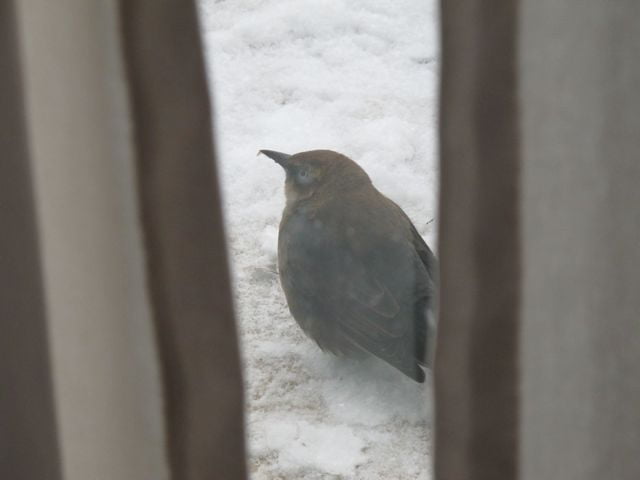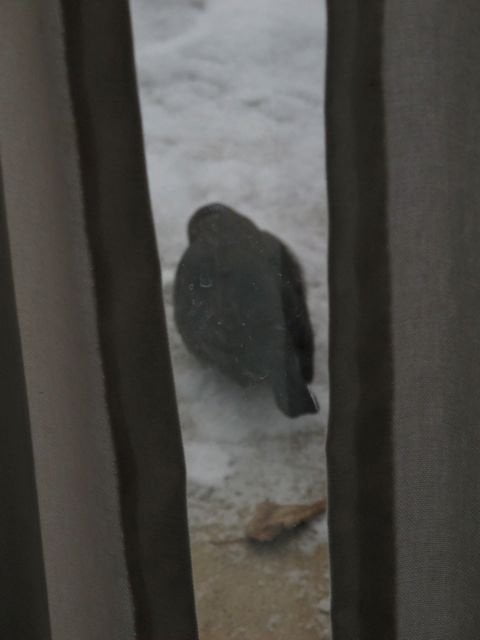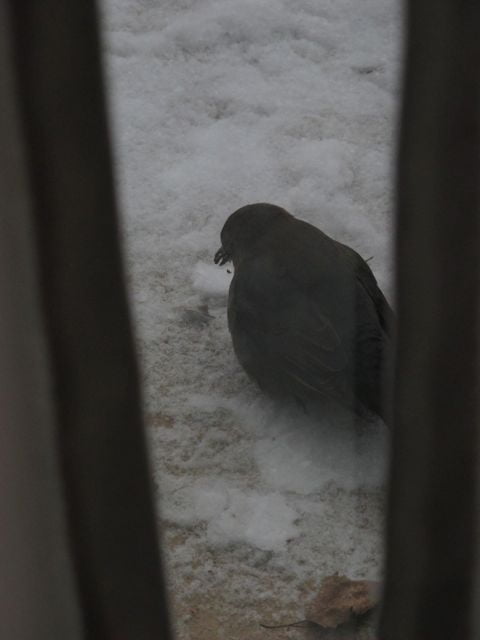 It’s been a very wintry winter here in southeastern Ohio. As each passing front has embraced our ridge-top farm, it has given us new things to enjoy and new birds to watch. Some of these winter-borne souls are regulars and we greet them like old friends—the purple finches, a smattering of pine siskins, the last sky wisps of American robins which stopped by long enough to pit-pit at us and then were on their way as if they, too, were worried about being tardy, like the white rabbit in Alice’s Adventures in Wonderland.
It’s been a very wintry winter here in southeastern Ohio. As each passing front has embraced our ridge-top farm, it has given us new things to enjoy and new birds to watch. Some of these winter-borne souls are regulars and we greet them like old friends—the purple finches, a smattering of pine siskins, the last sky wisps of American robins which stopped by long enough to pit-pit at us and then were on their way as if they, too, were worried about being tardy, like the white rabbit in Alice’s Adventures in Wonderland.
Other visitors are less common—rare even. And these we savor for they are as rare as blue, sun-filled sky on these short, flannel-gray winter days.
While working in my home office on a recent snowy afternoon, I heard a scraping sound coming from the base of the sliding-glass door next to my desk. I assumed it was one of our pair of Carolina wrens poking about the door’s metal track for spider eggs and other eatables. But my first glance told me this was no small wren.
It was larger, a blackbird perhaps. But which one?
Wait! Is that??? Could it be???
It’s a Rusty Blackbird! Wow. This species is one of the fastest-declining in North America and here was a member of this possibly vanishing breed just two feet from me. Needless to say I reached for the camera. Shot through the thick glass of the door these images were not destined for the cover of National Geographic, but I really felt compelled to document this bold behavior by this individual bird.
We’d had a small flock of rusty blackbirds the day before, in the brush pile near our main feeding station. That made sense since the enclosed patch of yard beneath the brush pile was littered with bird seed and rusty blackbirds prefer to forage in the enclosed habitat of wet woodlands.
So why was this guy foraging along my door sill? I think I finally formed a hypothesis. The foraging behavior of this species involves stalking about on the ground, flipping over leaves and sticks and whatever else to get at food items beneath the ground cover. All such ground cover was itself covered by a five-inch-deep blanket of snow on this particular day, so the blackbird, seeing the small scattering of brown leaves caught along the door sill, made the bold move to investigate. It was his thrashing at these leaves that caught my ear, and eventually my eye.
I watched until he finished his thrashing and flew off. Then of course I hastened to put out a small jar lid of meal worms and some suet dough with a scattering of cracked corn. I did not see the rusty again that day, but by the end of the following day, all the food I’d put out was gone. I can’t be sure that the rusty came back to the door sill—maybe I only succeeded in feeding the local white-footed mouse. Still, I felt privileged to have had a private audience with this rarest of blackbirds.
For those of you with a citizen science jones, there is The Rusty Blackbird Blitz being held from January 29 to February 13, 2011. This event aims to gather information on where concentrations of rusty blackbirds are spending the winter. We know so little about this fast-declining species, but here’s your chance to help us learn more.















Now that is an impressive yard bird. Even more so to see it at your window!